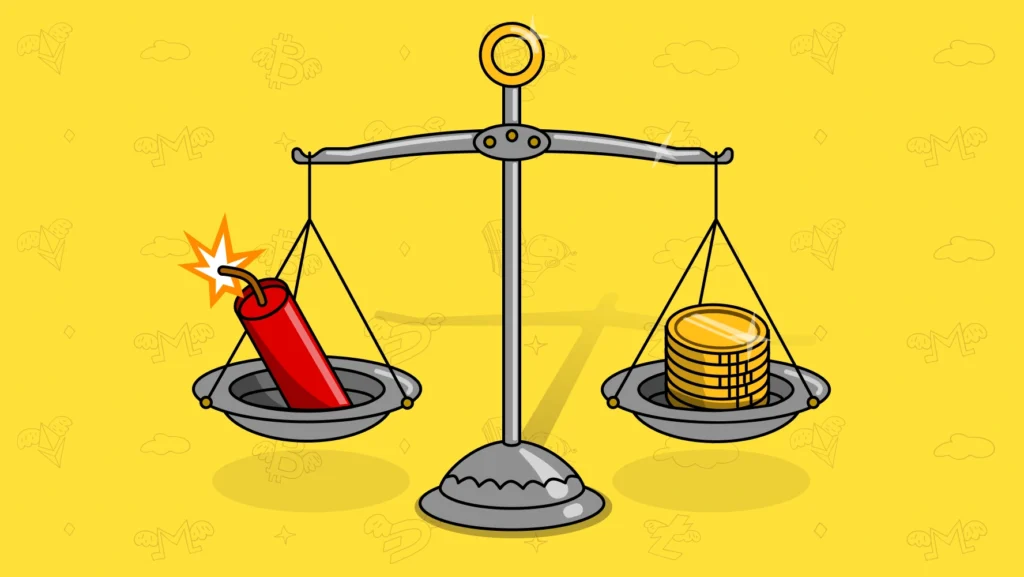What is Leverage Trading? The Basics You Need to Know Before Diving In
February 23, 2025

What Is Leverage Trading? A Comprehensive Overview
Leverage trading is essentially using borrowed money to amplify your investment potential. It’s the practice of controlling a larger trade position than what your initial capital would typically allow. Instead of just using your own funds, you borrow from a broker to control bigger trades. The payoff? You can make higher profits. However, there’s a catch—the risk of losing more than your original investment is just as real. If things go well, you profit more than you would have with your own money, but if the market turns against you, it can result in losses that far exceed your initial outlay.


How Leverage Trading Works: A Practical Example
Let’s dive into how this actually functions in the market. Imagine you have $1,000 and want to trade in the forex market. With a 10:1 leverage ratio, you can now control a $10,000 position, essentially borrowing $9,000 from the platform. The ability to trade with borrowed money is what makes leverage attractive, as it increases market exposure without requiring full capital upfront.
Now, if the market moves in your favor, say by 10%, you would make $1,000 in profit. That’s double your initial investment. But the flip side is brutal. If the market moves against you by 10%, you lose your $1,000—immediately wiping out your entire initial investment. Leverage can work both ways, which is why understanding how it operates is crucial.

Why Traders Love Leverage: The Appeal of Big Gains
Why are so many traders drawn to leverage trading? The answer is simple: it offers the potential for massive returns in a short amount of time. Short-term traders, in particular, love leverage because it can turn small market moves into big profits. Instead of only making money from large moves, leverage allows you to profit from relatively minor price fluctuations. The higher the leverage, the more significant the returns, but it also magnifies the risks.
Additionally, leverage gives traders the flexibility to diversify their portfolio. With less capital required for a larger position, you can spread your risk across multiple assets or markets. In volatile markets, this allows you to capture more opportunities while using less capital.

The Downside of Leverage Trading: The Risks You Can’t Ignore
While the potential for profits is alluring, leverage trading isn’t without serious downsides. The biggest risk is that leverage magnifies losses just as much as it magnifies gains. If you’re not careful, you could end up losing far more than your initial investment, even to the point of owing money to the broker. Emotional factors also play a huge role. The pressure of large trades can lead to panicked decisions—like getting out of a trade at the wrong time—creating even more risk.
Another major risk is the dreaded margin call. If your account balance drops below the required level due to losses, the broker will close out your positions to prevent further losses. This can happen quickly if your trade is moving against you, and without proper risk management, your losses could escalate fast.

Who Should Use It? Is It Right for You?
Leverage trading is generally not recommended for beginners. It’s best suited for individuals who have a solid understanding of the markets and are experienced in managing risk. If you’re new to trading, jumping into leverage without a clear plan can lead to financial disaster. Leverage requires a strong grasp of how to use tools like stop-loss orders, exit strategies, and risk management.
That said, if you’re still new, demo accounts can be an excellent way to practice. They allow you to get a feel for the market without risking real capital, helping you build the skills you need before committing actual funds.

Conclusion: Should You Try Leverage Trading?
To sum it up, leverage trading is both a powerful tool and a high-risk endeavor. It offers huge rewards but also significant risks. If you have experience and are able to manage your risks properly, leverage can help you maximize your gains. However, if you are unprepared or lack experience, it can quickly lead to significant losses.
So, ask yourself: Do I understand how leverage works? Am I prepared for the emotional highs and lows that come with it? If the answer is yes and you’ve done your homework, leverage trading could be the right choice. But be cautious—this is not a strategy for the faint of heart.
Relevant news: here

